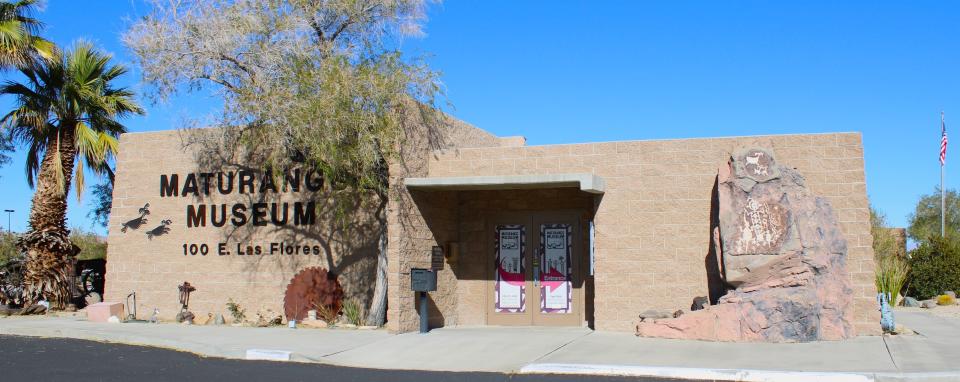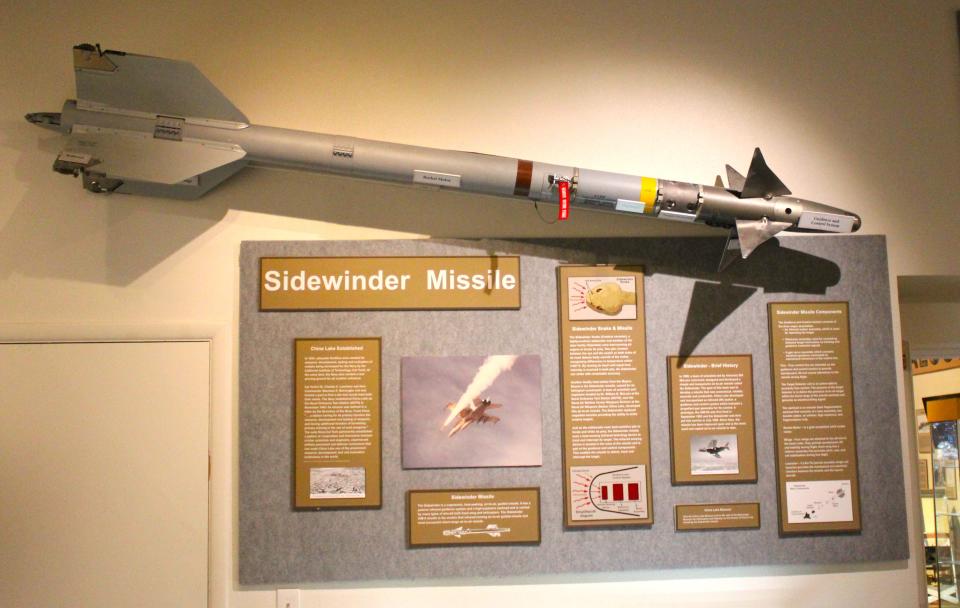If you visit Trona Pinnacles, make sure to stop at Maturango Museum in Ridgecrest

Recently, on a cold and windy weekend, I journeyed to the Trona Pinnacles, a few miles south of the booming town of Trona. The plan was simple: camp, snap some photos, and write a story about the mysterious tufas sticking out of the ground.
My lovely wife Laureen just looked at me when I announced the trip. “Who’d be silly enough to spend the night freezing in the middle of the desert in a tent?”
Obviously, she was not silly enough for this adventure, so I asked my buddy, Paul. “Heck, yeah, I’m game.”
So we did, and the wind ripped through the tent trailer like a tornado as icicles formed on three of my eleven toes.
It was a great trip nonetheless. The only issue is when I thawed out back at the ranch, I learned I had already done a column on the pinnacles on Jan. 3, 2020.
Silly me. I laughed and smiled at Laureen as she rolled her eyes at me.
I am now on a daily dosage of Extra Strength Prevagen.

Maturango Museum in Ridgecrest is not far from the Trona Pinnacles.
Yet, not to allow a chance of an adventure, even a silly cold one, to go by the wayside, we stopped by the Maturango Museum in Ridgecrest, not far from the Trona Pinnacles.
“Let’s stop and see what there is to see,” I mentioned to Paul after we had finished breakfast after our camping adventure.
“Pronounce it,” he said.
“Museum,” I answered.
The museum is located at 100 East Las Flores Ave and is simply gorgeous. The exterior is modeled after an adobe structure straight out of the Southwest, where we are currently. Next to the entrance was a huge rock sculpture of what appeared to be ancient petroglyphs.
There was a reason for such a facade, as will be detailed further in this column: a teaser.
The mission statement allows the visitor to understand why such an establishment as this museum exists.
‘Our Mission is to preserve, interpret, and develop an appreciation for the natural and cultural history of the Northern Mojave Desert through research and education in the natural and physical sciences and to promote the arts.’
While traveling, I find it interesting to see that the ‘arts’ are usually listed at the end of any mission statement, as though it is an afterthought.
“Dude, we forget to mention the arts,” a museum board member may state after a 15-day session to ensure the mission statement is all it can be.
“Tag it at the end, and no one even knows what that means anyway,” another board member may respond.
Museum features fascinating petroglyphs
One exhibit is the outside gardens with huge metal structures that resemble the famous Native American petroglyphs that are located not far away in the Coso Mountains. These rock carvings were produced by early hunter-gatherers who roamed this section of the Mojave Desert thousands of years ago. Researchers believe some of the images may have been carved 13,000 years ago. It is also the largest concentration of such glyphs (that is what we in the know refer to them) in the western hemisphere.
The carvings are located within the Coso Petroglyph National Historic Park, centered within the boundaries of the Naval Weapons Air Station China Lake facility.
The museum used to offer tours of the glyphs but had to stop due to a 7.1 magnitude earthquake that struck the Naval complex on July 5, 2019. A lot of damage occurred, and then, to top it off, the blasted COVID pandemic did not make seeing the site any easier.
At this time, no tours are being conducted. I called the station commander, and he sneered at me over the phone. “I know you. You think you are a funny writer - no tour for you!”
But, besides the metal artwork in the museum's gardens, there are walking paths where visitors can stroll to view various mining equipment, from ore carts, grinding wheels, hard rock tools, explanation kiosks, and the like.
The various paths meander here and there and are quite enlightening, detailing the early history and strong individuals who came to this part of the desert to make it their home.
One cool walking trail shows the sun and planets within our solar system and the relative distance they are from each other. Paul walked out to where little lonely Pluto (who lost planethood status because some big-headed astronomer decided it was not a planet), and he was gone for three hours.
“That was a long walk,” he said upon his return.
How is the Maturango Museum laid out?
The museum's interior is divided into different rooms or galleries, each displaying certain aspects of the locale.
A favorite of mine was the El Paso Gallery, where visitors can wander around and hear about this exhibit or that exhibit.
There were ancient mammoth bones. There were ancient bison bones. There were ancient Joshua Treeman bones. And there were other bones.
One rather eerie scene was a digital display showing how a saber tooth cat’s head goes from a bony skull to a complete replica of an intact head.
I watched it a dozen times from various angles, and the skull always became hairy and fearsome, whether or not I squinted.
The petroglyphs we cannot see, including wonderful photographs, are described in great detail. But if we are not allowed to visit, do they truly exist?
I am waiting for the commander to get a hold of me and let the truth be known about these supposed glyphs.
Ingenuity is the best term for the early Native Americans who lived or traveled through this area of the Mojave Desert. Handmade tools, baskets, shoes, metates, and other goods, which appear to have been made very recently, are on display. The craftsmanship is astonishing - but that’s from a guy who finds opening a tube of Pringles an accomplishment.
One interesting exhibit showed how a piece of obsidian can be flaked to create various products, including deadly spears or arrow points.
This obsidian is known as the Coso Obsidian and is found in the Coso Volcanic Field in Inyo County. Again, this field is within the Naval Weapons Station China Lake - so no go, partner, when looking for this obsidian.

Maturango Museum galleries have something for everyone
Each gallery within the museum has something for any tourist, and each is laid out clearly and precisely, allowing tourists to understand what they are experiencing fully.
A whole wing is dedicated to those first responders (professional or volunteer) who risk their lives in search and rescue missions throughout the Mojave Desert. Photographs of these heroes are on display as they repel from helicopters, race across the sands in four-wheel drives, or clamber deep into caves or mine shafts doing what they do best - rescuing knuckleheads who may not have heeded clear danger signs.
“Man, that rickety ladder leading into the depths of that closed mine shaft looks stable enough,” one knucklehead may say to another knucklehead.
“Let me finish this bowl. . . and then start climbing down, Dude.”
Seriously, this special exhibit should enlighten people about the dangers in the desert's remote areas, and all common sense should be in use when going out into the hinterlands on adventures.
There is an area, the Sylvia Winslow Gallery, which offers room for concerts, meetings, or displays of various art exhibits that may be rotating. But there is no mention of the Eagle's great song, Take It Easy, establishing Winslow, Arizona, as a go-to destination.
Argus Gallery is a must for those interested in photography, artworks, and the like. Time is necessary for this room since there is so much to see, which covers all aspects of the immediate area of Ridgecrest and expands further out, encompassing the Mojave Desert itself.
Maturango Museum also hosts a multitude of events throughout the year: film series, art shows, local events, historical lectures, and one which seems to occur regularly, Creativity - which showcases artists who have used ceramics, oil, watercolor, feathers, and the like in their individual works of art.
I am considering returning with my macaroni art, in which I carefully create images of Mount Rushmore.
This museum, which had not been on my list on this adventure, was a wonderful place to stop and should be a must for anyone traveling to or through Ridgecrest.
John can be contacted at beyersbyways@gmail.com. For further information, Maturango Museum
This article originally appeared on Victorville Daily Press: Stop at Maturango Museum in Ridgecrest when visiting Trona Pinnacles

